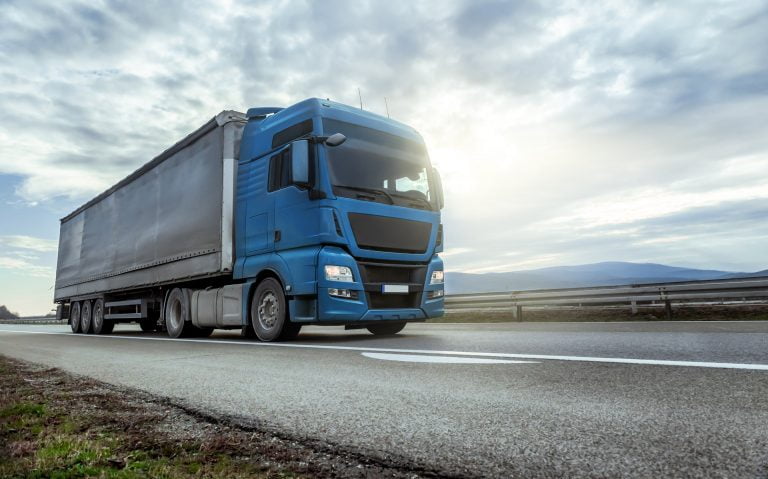Goodbye, LE-TRA!
At the end of 2027, the time has come: SAP Business Suite (SAP ECC) will finally run out of maintenance. For companies for whom this changeover is too soon, there is the option of continuing to use the support of the outdated systems until 2030 – but only at additional cost. The widely used logistics transport solution (TRA) within the logistics component Logistics Execution (LE) LE-TRA can be used beyond 2030, but LE-TRA is not part of the target architecture of SAP S/4HANA and accordingly will not be further developed, making real innovations a thing of the past. We take a look at what companies need to consider when transferring master data of the “Business Partners”.
Similar to the SAP Extended Warehouse Management (EWM) module, which replaces its predecessor WM with the introduction of SAP S/4HANA, two different variants are offered in Transportation Management (TM): (Basic) Transportation Management and Advanced Transportation Management. While (Basic) TM replaces the main functions of LE-TRA and is part of the S/4HANA license, Advanced TM is associated with additional license costs. Currently, the following licenses are available: Transportation Planning & Execution and Transportation Charge Management.
Integration options of SAP S/4HANA Transportation Management
SAP S/4HANA Transportation Management (TM) is often integrated into existing, usually complex system landscapes.
On-premise we distinguish between two different deployment options:
- SAP S/4HANA Embedded TM – integration of TM and other applications on the same system instance with central master data.
- SAP S/4HANA TM – as a decentralized system in a so-called sidecar scenario (side-by-side).
The Business Partner in SAP S/4 HANA Transportation Management
With the introduction of SAP S/4HANA, there is no way around the Business Partner; the old accounts debtor/creditor model is obsolete. Business Partners can be, among others, organizations and companies (such as consignees, forwarders, etc.) with which a company (e.g. shipper, logistics service provider) maintains business relationships, but also employees of the company, such as in Transportation Management, for example, the truck driver.
The role concept allows a Business Partner to be both a customer and a vendor at the same time. The advantages of the new object model are clear: Data integrity is ensured and redundancies avoided by maintaining the data in a central location. Specific data is maintained at the level of the respective roles.
How do I get Business Partners into my S/4HANA Transportation Management?
While the same master data can be accessed centrally from all modules in SAP S/4HANA Embedded, the Business Partners must first be transferred to the TM system in side-by-side scenarios. In principle, master data maintenance should always remain in the source system.
Optimally, the source system is already an S/4 HANA system. Here, the golden path can be followed and all master data, including the Business Partner, can be transferred conveniently via the Data Replication Framework (DRF). Only the Customer Vendor Integration (CVI) must be set up in a rudimentary form in the target system and adapted to the TM so that the Business Partners can be created via the interface.
What is the challenge if you use an SAP ECC as the backend system?
It becomes more complicated if the source system is still an SAP ECC. The most important question then is whether there has already been a transformation project for the accounts debtors and creditors towards Business Partners.
If this question can be answered with ‘Yes’, a transfer of the Business Partners is also possible via the DRF via Enterprise Service. Analogous to the S/4HANA to S/4HANA TM scenario, the CVI must also be set up in a rudimentary way in the target system.
If there are no Business Partners in ECC yet, the DRF cannot be used. However, it is not mandatory to run a Business Partner pre-project or to wait for its completion. In order to start with the TM implementation, the debtors and creditors can be transferred to the target system using DEBMAS or CREMAS IDocs.
It is important to know at this point that with SAP S/4HANA the inbound processing of the above-mentioned IDocs has been adapted. Initially, no customers or vendors are created in the target system; instead, Business Partners are created. The creation of the customer and vendor master data records takes place in the background. This also requires a CVI configuration in TM, because the “old” database tables are still in use. In addition, close coordination with the responsible departments is advisable in order to set up the CVI in a future-proof manner.
Our recommendations and practical tips
IDocs are no longer the state-of-the-art solution for data transfer in the S/4HANA environment, but…
- They still offer the advantage of being able to work with change pointers
- The know-how for configuring distribution models, partner profiles and IDoc extensions is widespread in IT departments
- It is generally recommended to work with reduced message types in order to significantly reduce the effort of having to reconcile customizing from the source system.
- The DRF_FOUNDATION business function (as of EHP8) covers the DRF functionalities for the transfer of business partners (via Web Service), shipping points and plants.
- The transfer of products is only possible via IDoc, if a SAP ECC is the source system. The corresponding DRF functionality may currently only be used with a valid MDG license. If there is no MDG license, transaction BD10 must be used.
We are here for You!
Don’t be afraid of Business Partners! It is worthwhile to pay attention to the topic at an early stage as part of an SAP S/4HANA transformation. Together, we will find a solution for your initial scenario to be able to start with the TM implementation even without Business Partners. Could we spark your interest? Feel free to contact us at
Florian Gerlach
Development Architect
Blog
Understanding the Role of SAP Business Technology Platform in Modern Logistics
4. March 2025
The SAP Business Technology Platform (SAP BTP) is designed to address challenges through a unified environment. It integrates key technological functions such as application integration, ...
Learn more →
Blog
TM in SAP S/4HANA Public Cloud
9. August 2024
Fast implementation and scaling, easily calculable operating costs and a system that is always up to date: SAP S/4 HANA Public Cloud offers these and ...
Learn more →
Blog
Great Flexibility for Your Transportation Processes with Conditions in SAP S/4HANA TM
14. December 2022
Automation and flexibility in transportation management are essential, because manual processes cost time and time is money. More flexibility and automation with the Fiori Launchpad.
Learn more →
Blog
SAP S/4HANA Transportation Management: It won’t work without Business Partners!
21. September 2022
SAP S/4HANA TM will replace the existing LE-TRA at the end of 2027. But what do companies need to consider when transferring master data from ...
Learn more →
News
#futureoflogistics: leogistics Points the Way to the Future of Logistics
27. April 2022
What is the significance of technologies such as AI and machine learning in logistics? How can sustainable logistics work?
Learn more →
Blog
Standing Up To Digital Freight Forwarders
15. July 2021
Digital freight forwarders are entering the transport order market. How can classic freight forwarders keep pace?
Learn more →
Blog
Solving Complex Planning Problems With The Help Of Machine Learning – A Practical Example
15. July 2021
Machine learning can provide valuable assistance in solving almost unsolvable tasks - and thus increase the efficiency of many processes.
Learn more →
Blog
Container management: Do you still have all containers in stock?
2. June 2021
Virtually nothing works in logistics without containers. With smart container management, the cycle can be controlled efficiently.
Learn more →
Blog
How to successfully migrate from SAP TM 9.5 to S/4HANA TM
1. April 2021
You have decided to migrate from your SAP TM 9.5 system to SAP S/4HANA Transportation Management? But what happens next? What needs to be migrated ...
Learn more →
BLOG &
NEWS
Latest news and blog posts from the world of intelligent supply chain management.













